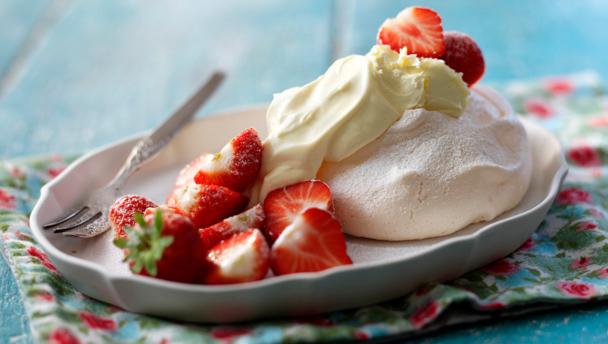

By Rick Stein
The white part of an egg, also known as the albumen. It contains virtually no fat and is high in protein.
 Steak, sweet potato fries and baked onion rings
Steak, sweet potato fries and baked onion rings
 Salt-crusted sea bass with runner bean salad
Salt-crusted sea bass with runner bean salad
 Rye crispbread
Rye crispbread
 Buckwheat blinis with scrambled eggs and smoked salmon
Buckwheat blinis with scrambled eggs and smoked salmon
 Whisky-cured salmon with beetroot and blinis
Whisky-cured salmon with beetroot and blinis
 Queen of puddings
Queen of puddings
 Bunting cake
Bunting cake
 Paul’s kransekake
Paul’s kransekake
 Lemon curd and pistachio meringue roulade
Lemon curd and pistachio meringue roulade
 Earl Grey martini
Earl Grey martini
When egg whites are whisked, air is trapped in them, and remains trapped when the whisked egg whites are folded into meringues, mousses or soufflés and baked. Egg whites will whisk to a greater volume when they're at room temperature than when chilled, so always remove them from the fridge to bring them up to room temperature before you start cooking. When heated, the proteins in egg whites will combine and coagulate, which is essential for making cakes, pancakes and batter puddings. Egg whites also act as a stabiliser: the protein in egg whites will minimise the chance of ice crystals forming in a sorbet as it freezes.
Vegans should be aware that egg whites are sometimes used as a fining agent in winemaking.
Type the ingredients you want to use, then click Go. For better results you can use quotation marks around phrases (e.g. "chicken breast"). Alternatively you can search by chef, programme, cuisine, diet, or dish (e.g. Lasagne).